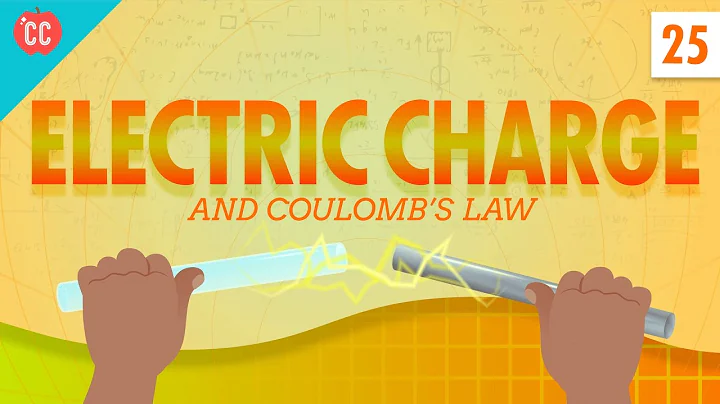French physicist Coulomb discovered Coulomb's law

Charlie Augustin Coulomb
Electricity is an important branch of physics. During its development, many physics giants have made outstanding contributions. The French physicist Charles-Augustin Coulomb was one of the most influential.
Coulomb was born in Angoulême, France on June 14, 1736. Coulomb's family was wealthy, and he received a good education during his teenage years. He later studied at the School of Military Engineering in Paris, and after leaving school, he worked for the Royal Engineering Company of Martinique in the West Indies. After working for eight years, he served in Cherbourg, Île Aix, and other places. At this time, Coulomb had already begun to engage in scientific research work, and he focused his main energy on studying engineering mechanics and statics issues.
He spent many years in military construction work in the army, accumulating material for his 1773 paper on the strength of materials . In this paper, Coulomb proposed a method for calculating the distribution of stress and strain on an object. This method became the theoretical basis of structural engineering and is still used today.
In 1777, the French Academy of Sciences offered a reward for ways to improve the magnetic needle in the navigation compass. Coulomb believed that the magnetic needle support on the shaft would inevitably cause friction. To improve the magnetic needle, we must start from the fundamental problem. He proposed hanging magnetic needles from fine strands of hair or silk thread. At the same time, he conducted in-depth and detailed research on magnetism, paying special attention to the effect of temperature on the properties of magnets. He also found that the twisting force of the thread was proportional to the angle of the needle rotation, so that this device could be used to calculate the magnitude of the electrostatic or magnetic force. This led him to invent the torsion scale, which could measure very small forces with great accuracy.

Coulomb invented the torsion scale
Due to his successful design of a new compass structure and his contribution to the study of general mechanical theory, in 1782, he was elected as an academician of the French Academy of Sciences. In order to maintain better conditions for scientific experiments, he still served in the army, but his name was well known in the scientific community.
Coulomb conducted a series of studies on the interaction between charges through precise experiments between 1785 and 1789, and published many related articles in the Memorandum of the Royal Academy of Sciences.
In 11785, Coulomb used the torsion balance he invented to establish the famous Coulomb's law in electrostatics. In the same year, he introduced his experimental device, test process and experimental results in detail in his paper "Electric Laws" to the French Academy of Sciences.
Coulomb's torsion scale is composed of a light rod suspended on a slender wire and two balance balls attached to both ends of the light rod. When no force acts on the ball, the rod assumes a certain equilibrium position. If one of the two balls is charged, and another small ball with the same charge is placed near it, an electric force will act on the ball, and the ball can move, causing the rod to rotate around the suspension point until the suspension Until the torque and electric force reach balance. Because the suspension line is very thin, a small force acting on the ball can cause the rod to deviate significantly from its original position, and the angle of rotation is proportional to the magnitude of the force. Coulomb charged the movable ball and the fixed ball with different amounts of charge and changed the distance between them:
For the first time, the two balls were 36 degrees apart, and the rotation angle of the silver wire was measured to be 36 degrees.
The second time, the two balls were 18 scales apart, and the rotation angle of the silver line was measured to be 144 degrees.
The third time, the two balls were 8.5 scales apart, and the rotation angle of the silver line was measured to be 575.5 degrees.
The above experiment shows that when the distance between two charges is 4:2:1, the torsion angle is 1:4:16. Since the size of the torsion angle is inversely proportional to the torsion force, it follows that the size of the repulsion between two charges is inversely proportional to the square of the distance. Coulomb believed that the third deviation was caused by leakage of electricity.
After these ingenious arrangements, careful experiments, repeated measurements, and analysis of the experimental results to find out the cause of the error and make corrections, Coulomb finally measured the repulsion between small balls with the same amount of charge. .
But for the gravitational force between dissimilar charges, there is trouble in measuring it using torsion. Because the torsional restoring moment of the wire is only proportional to the first power of the angle, this cannot guarantee the stability of the torsional balance. After repeated thinking, Coulomb invented the electric pendulum. Using a method similar to that of a simple pendulum, he determined that the attraction between dissimilar charges is also inversely proportional to the square of their distance.
Finally, Coulomb finally found out the quantitative relationship between the interaction force between two point charges in vacuum, the electric charge carried by the two point charges and the distance between them. This is Coulomb's law in electrostatics, that is The force between two charges is directly proportional to the product of the two charges and inversely proportional to the square of the distance between them. Coulomb's law is the first quantitative law in the history of the development of electricity. It makes the research of electricity from qualitative to quantitative stage, which is an important milestone in the history of electricity. The unit of electric charge, the coulomb, is named after him. Coulomb's law in magnetism is also obtained using a similar method.
When the French Revolution broke out in 1789, Cullen lived in seclusion in his own territory and devoted himself to scientific research every day. In the same year, an important work of his came out. In this book, his understanding of the two forms of electricity developed into the theory of magnetism, and he concluded that two magnetic poles are similar to the interaction of two point charges. Laws of interaction. Coulomb enriched the measurement methods of electricity and magnetism research with his series of works, and extended the mechanical principles of Newton to electricity and magnetism. Coulomb's research paved the way for the development of electromagnetics and the establishment of electromagnetic field theory . This is why his torsion scale has been widely used in precision measuring instruments and other aspects of physics.
Coulomb not only made significant contributions to mechanics and electricity, but as an engineer, he also made important contributions to engineering. He once designed a method for underwater operations. This method of operation is similar to the modern caisson . It is a very important method used in the construction of underwater structures such as bridges.
He also left us many valuable works, the most important of which is the book "Electricity and Magnetism", a total of seven volumes, which was published and released successively from 1785 to 1789.
On August 23, 1806, Coulomb died of illness in Paris at the age of seventy.
Coulomb was one of the greatest physicists of the eighteenth century, and his outstanding contributions will never be erased.





















![Jurassic World Dominion - Official Trailer [HD] - DayDayNews](https://i.ytimg.com/vi/fb5ELWi-ekk/hq720.jpg?sqp=-oaymwEcCNAFEJQDSFXyq4qpAw4IARUAAIhCGAFwAcABBg==&rs=AOn4CLAzV1CQV3H0uWFmpsQ1ulNUMNFyiw)